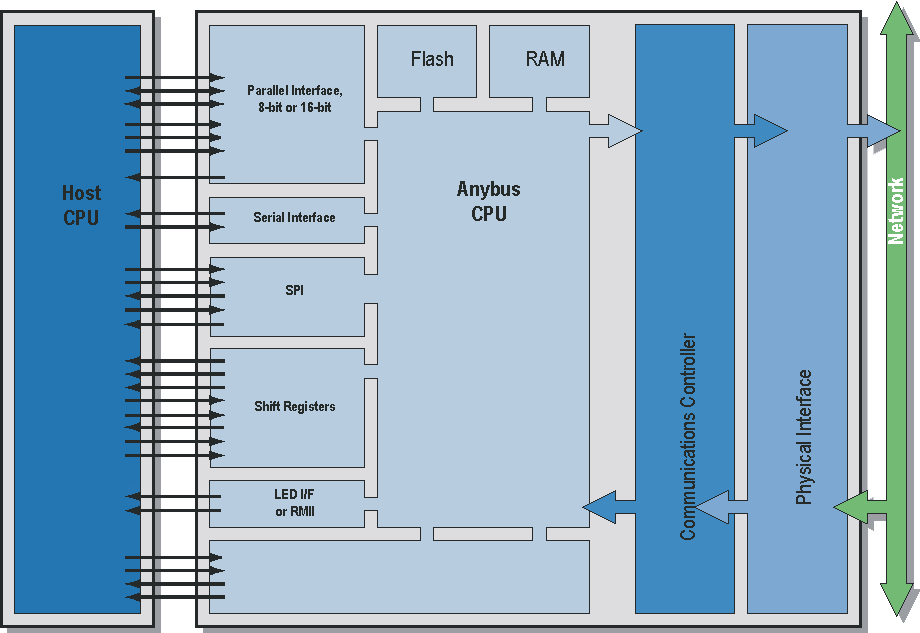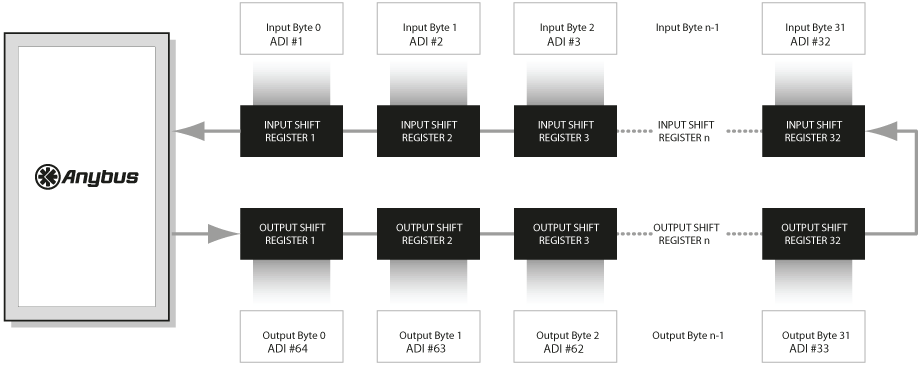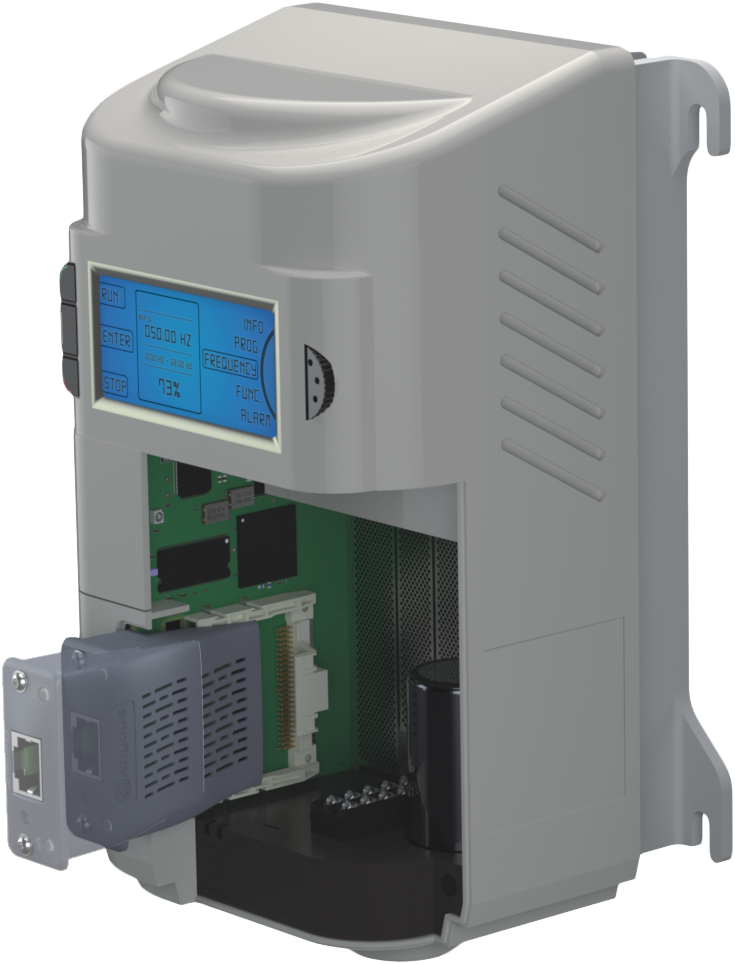Hardware interface
Anybus CompactCom 40-series, Hardware Application Interface
Host-interface
The hardware interface of the CompactCom 40 series is based upon a standard 50-pin CompactFlash™ connector. The pinning is tailor-made for industrial communication purposes and derives from standard CompactFlash signaling.
All CompactCom modules are powered by a single 3.3V power supply. In addition to the CompactFlash connector, all CompactCom modules have a specific shielding and grounding method, for industrial robustness and high EMC compliance. The hardware interface of active and passive modules is different, but both are fully independent of the chosen industrial network.
Host-interface modes
Parallel application interface
CompactCom 40 series modules provide a fast parallel 2kB (8-bit) Dual Port Ram interface.This allows the host application to access the Anybus module directly as a memory mapped peripheral. For increased efficiency, an optional interrupt request signal (/IRQ) allows the host application to service the Anybus module only when necessary. Polled operation is also possible. In addition to the address and data signals of the Dual Port Ram, the parallel interface provides status and control signals, including reset, module ID, LED status and GPIO.
The 8-bit interface is compatible with Anybus CC-30-series
SPI
The SPI (Serial Peripheral Interface) is a synchronous serial interface with configurable baud rate. 40-series supports baud up to 20 MHz. It can be directly connected to a microcontroller which supports the standard 4-wire SPI-interface. If desired, the Anybus CompactCom module 40 may also communicate via 3-wire SPI, where 'Slave Select'-signal is omitted.
The SPI interface is preferred over UART-interface in connection with the high transfer speed.
Serial application interface
The serial interface is a asynchronous serial interface with configurable baud rates of 19.2kbps - 625kbps with a fixed frame size for efficient DMA usage. It can easily be connected directly to a micro controller or UART of the host application.
The UART interface is compatible with Anybus CC-30-series
I/O shift register
In this mode, the Anybus module CompactCom 40 operates tand-alone, ie without the module connected to a host processor. The module is connected to slaves that exchange input and output data to the module via a ring-type shift register structure.
Process data is transmitted via shift registers which are clocked by the module. The Anybus CompactCom 40 supports up to 32 8-bit registers for I/O, so in total 256 bits input/ouput can be exchanged.
The Anybus CompactCom 40 is using a 12.5 MHz clock in I/O shift register mode.
Network interface
The network interface is dependant of the selected industrial network (Ethernet or fieldbus). It uses the connector type that is specified by the specific network standard. The signaling complies with the respective network specification. In addition, two LED's are integrated into the front of the CompactCom module, providing network and module status information.
Mechanics
A unique mechanical concept allows the module to be implemented as an end-user option (plug-in), or embedded into the host product at the manufacturing stage. The plug-in concept allows the vendor to assemble and ship their product without the CompactCom module fitted. The end user can then at a later stage decide whether to install an Anybus module or not.
Module mounting
The module insertion can be made at any stage in the logistical chain between the automation device manufacturer and the end customer. This enables optimized logistics and flexibility.
The CompactCom slot consists of a well defined empty space on the host applications printed circuit board (PCB) and a male 50-pin CompactFlash connector. If the manufacturer supplies his automation device without an inserted module, the slot should be protected by the CompactCom slot cover. HMS can supply a “blind” slot-cover, which may be used to cover the CompactCom slot when not in use, allowing the module to be supplied as an end-user option instead of being mounted during manufacturing. Specifications for the slot cover are featured in the CompactCom hardware design guide.






